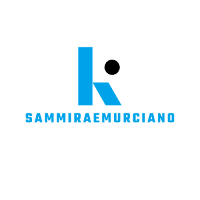How do I generate images for tutorials or practical guides ?

Tutorials and how-to guides are valuable tools for sharing knowledge and skills with a target audience. Adding quality images to these materials can significantly improve reader understanding and engagement. However, creating original images can be tedious and time-consuming, especially for those without advanced artistic or technical skills. Fortunately, there are now a number of tools and techniques that make image generation simple and effective, even for non-technical users. Here are the different options.
MyImageGPT: a powerful tool for generating images for tutorials or practical guides
Among the image generation tools based on artificial intelligence, MyImageGPT stands out for its ability to create realistic, high-quality images from complex text descriptions. This tool is particularly well suited to creating images for tutorials or practical guides, as it can generate precise, detailed illustrations that perfectly illustrate the different stages of a process.
Have you seen this : How Might Intelligent Traffic Management Systems Alleviate Urban Congestion?
MyImageGPT offers a number of advantages for users who want to generate images for their tutorials:
- Ease of use: MyImageGPT's interface is simple and intuitive, allowing even inexperienced users to create quality images in a matter of minutes.
- Versatility: MyImageGPT can generate a wide variety of images, from simple diagrams to complex illustrations.
- Image quality: Images generated by MyImageGPT are realistic and high resolution, making them ideal for use in tutorials and how-to guides.
- Customisation: MyImageGPT allows users to personalise their images by adjusting various parameters, such as artistic style, colour palette and level of detail.
- If you're looking for a powerful, easy-to-use tool to generate high-quality images for your tutorials or how-to guides, MyImageGPT is a great option to consider. Explore further here.
Choosing the right image generation tool
Choosing the right image generation tool for your needs depends on a number of factors, such as your level of technical expertise, your budget and the type of images you want to create. Here are some popular options to consider:
In parallel : What Role Can Hyperspectral Imaging Play in Recycling Sortation Systems?
- Free online tools: Canva, CreepyInk, Photopea
- AI-based tools: Artbreeder, Dream by WOMBO, NightCafe Creator
- Photo editing software: Adobe Photoshop, GIMP, PhotoScape X
Creating images from scratch
If you want to create unique, customised images, you can use vector graphics or photo editing tools to create them from scratch. This gives you total control over the creative process and allows you to produce images that are perfectly tailored to your specific needs.
Use royalty-free templates and images
Many websites offer royalty-free templates and images that you can use for free or for a small fee. This can save you time and give you access to a wide variety of quality images. However, it's important to choose images that are relevant to your subject and make sure they are free to use.
Generate images from text
Artificial intelligence tools such as Artbreeder and Dream by WOMBO allow you to generate images from text descriptions. This approach can be useful for creating abstract or conceptual images that would otherwise be difficult to create.
How-to videos
Although more complex to produce, explainer videos offer considerable potential for dynamic tutorials. They combine filmed sequences, animations, voice-overs and annotations, creating an immersive and interactive experience. This multimedia approach makes it much easier to understand processes involving movement or changes of state
Tips for obtaining quality images
First of all, take care to choose an image resolution that is suitable for your use, especially for online tutorials, a resolution of 1080 pixels or more is generally sufficient. Also use clear, sharp images. Avoid blurred or pixelated images and make sure that your images are relevant to your subject.
Next, remember to use high-quality images, as poor-quality images can give the impression of a lack of professionalism.
Finally, it's important to create visual consistency across your tutorial set by using a similar image style throughout your tutorials to create a consistent visual experience.
Conclusion
Generating quality images for your tutorials or how-to guides doesn't have to be a daunting task. By using the right tools and following the advice above, you can create attractive and informative images that will captivate your audience and improve the effectiveness of your training materials.
